Mild, creamy, slightly sweet Japanese-style vegan mayonnaise—perfectly egg-free and made from soy milk and blended oils.
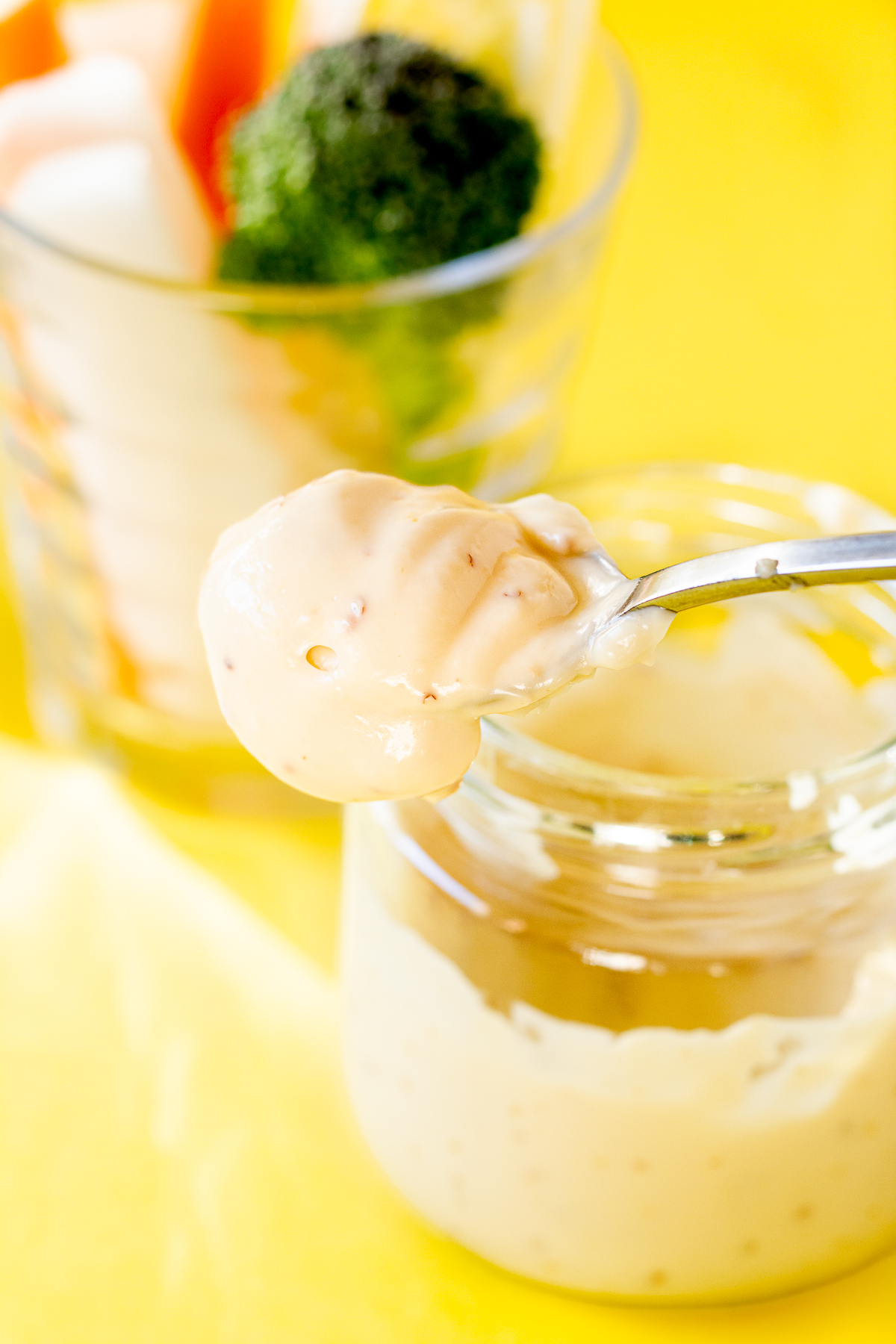
This easy-to-make vegan Japanese mayonnaise is egg-free, smooth, and just a touch sweet, reminiscent of Kewpie-style mayo. Using a blend of rice bran oil and extra virgin olive oil along with a hint of Japanese brown sugar(黒糖/kokuto), it achieves a rich, mellow flavor without being overly tangy.
It’s ideal for sandwiches, veggie sticks, fries, and even as a base for dips like our Vegan Soy Sauce Koji Mayo Dip. Whether you want a Kewpie-style vegan mayo or a gentle Japanese-flavored mayonnaise, this recipe brings the perfect balance of creaminess and subtle sweetness.
Jump to:
🥛 Ingredients
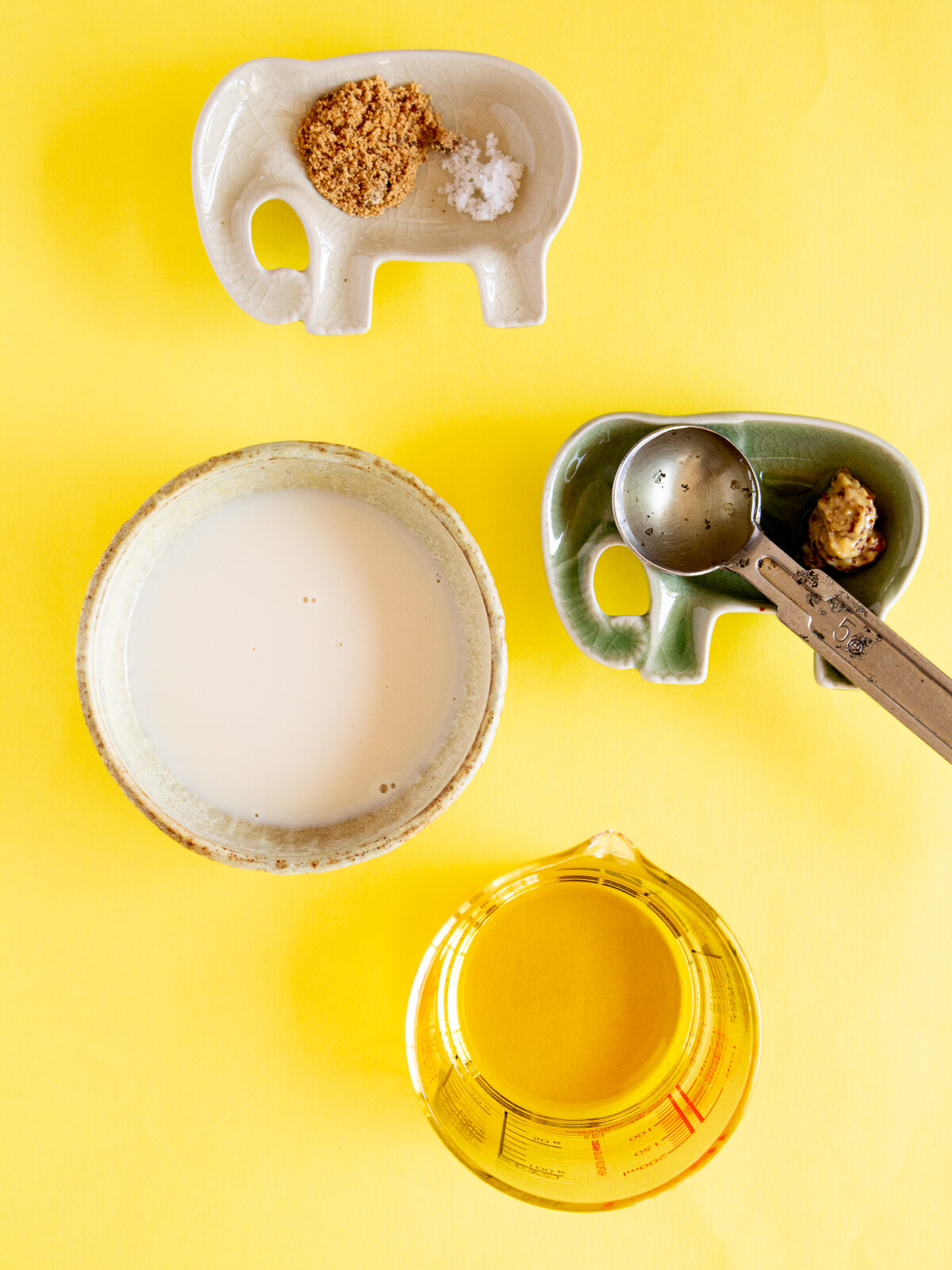
- Soy Milk (25 g, unsweetened / plain)
- Use plain soy milk (無調整豆乳), not sweetened. This keeps the flavor neutral and allows the mayonnaise’s subtle sweetness and umami to shine.
- Powdered Japanese Brown Sugar (3 g, Kokutou / 黒砂糖)
- Brown sugar is key: It gives a mild sweetness and depth of flavor that white sugar or beet sugar cannot. Make sure there are no large crystals, which can affect texture.
- Natural Salt (1 g)
- A pinch of natural salt enhances the overall flavor while keeping it gentle and balanced.
- Mustard (3 g, grainy or Dijon)
- Adds a slight sharpness and helps with emulsification, giving the mayo a stable, creamy texture.
- Vinegar (1 tsp, apple cider or rice vinegar)
- Apple cider vinegar: Mild and slightly fruity finish.
- Rice vinegar: More acidic, gives a crisp, clean flavor.
- Choose according to personal taste; either works well in Japanese-style vegan mayo.
- Oils (45 g rice bran oil + 5 g extra virgin olive oil)
- Rice bran oil: Neutral flavor, ideal as the base for smooth, creamy mayo.
- Extra virgin olive oil: Adds subtle aroma and richness; use sparingly (just 5 g) to avoid overpowering the mild taste.
For exact amounts, please check the printable recipe card👇
🥣 Step-by-Step Instructions
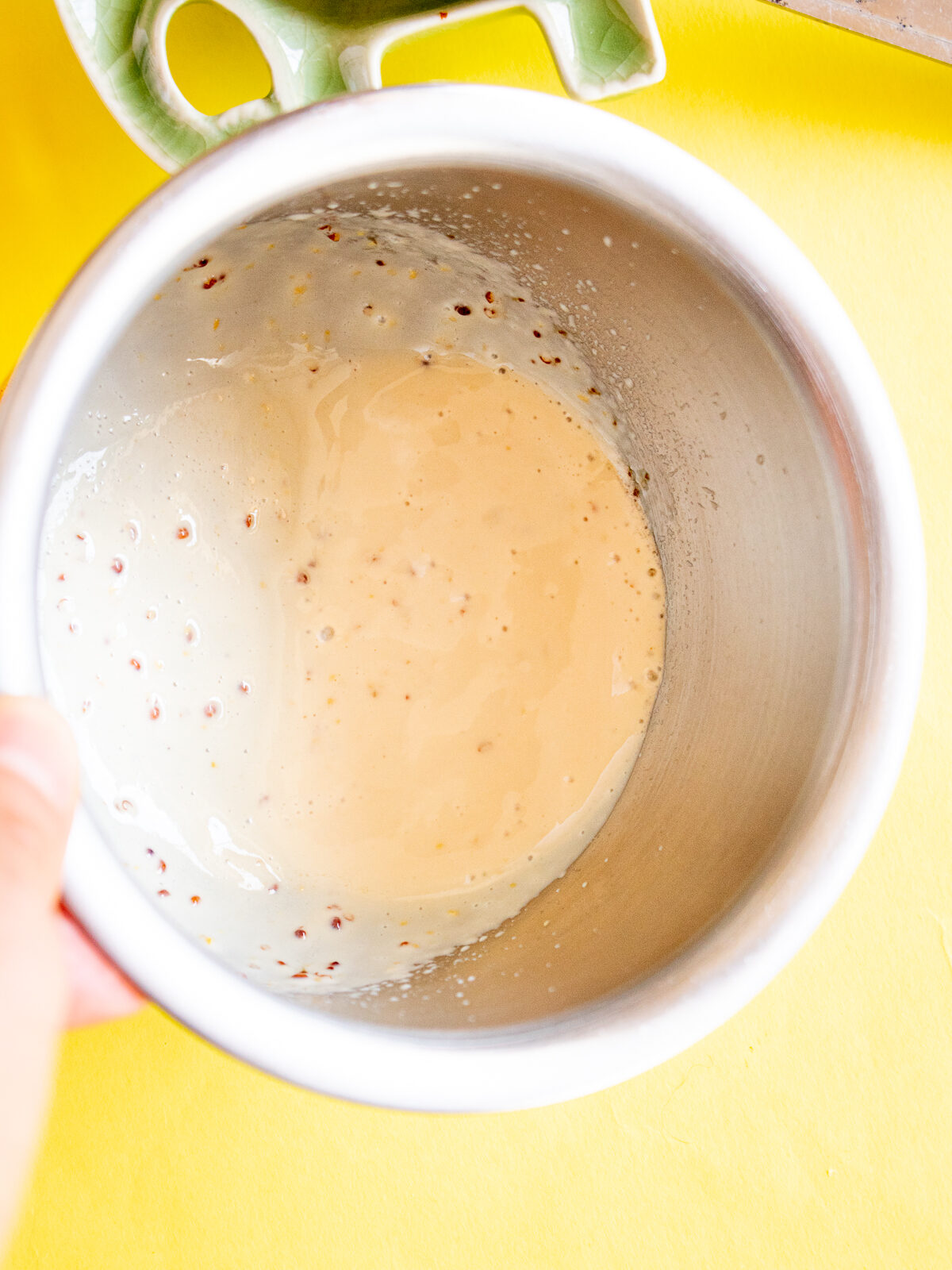
- Mix the base ingredients
Combine soy milk, vinegar, sugar, salt, and mustard in a bowl. Blend with a hand blender until smooth.
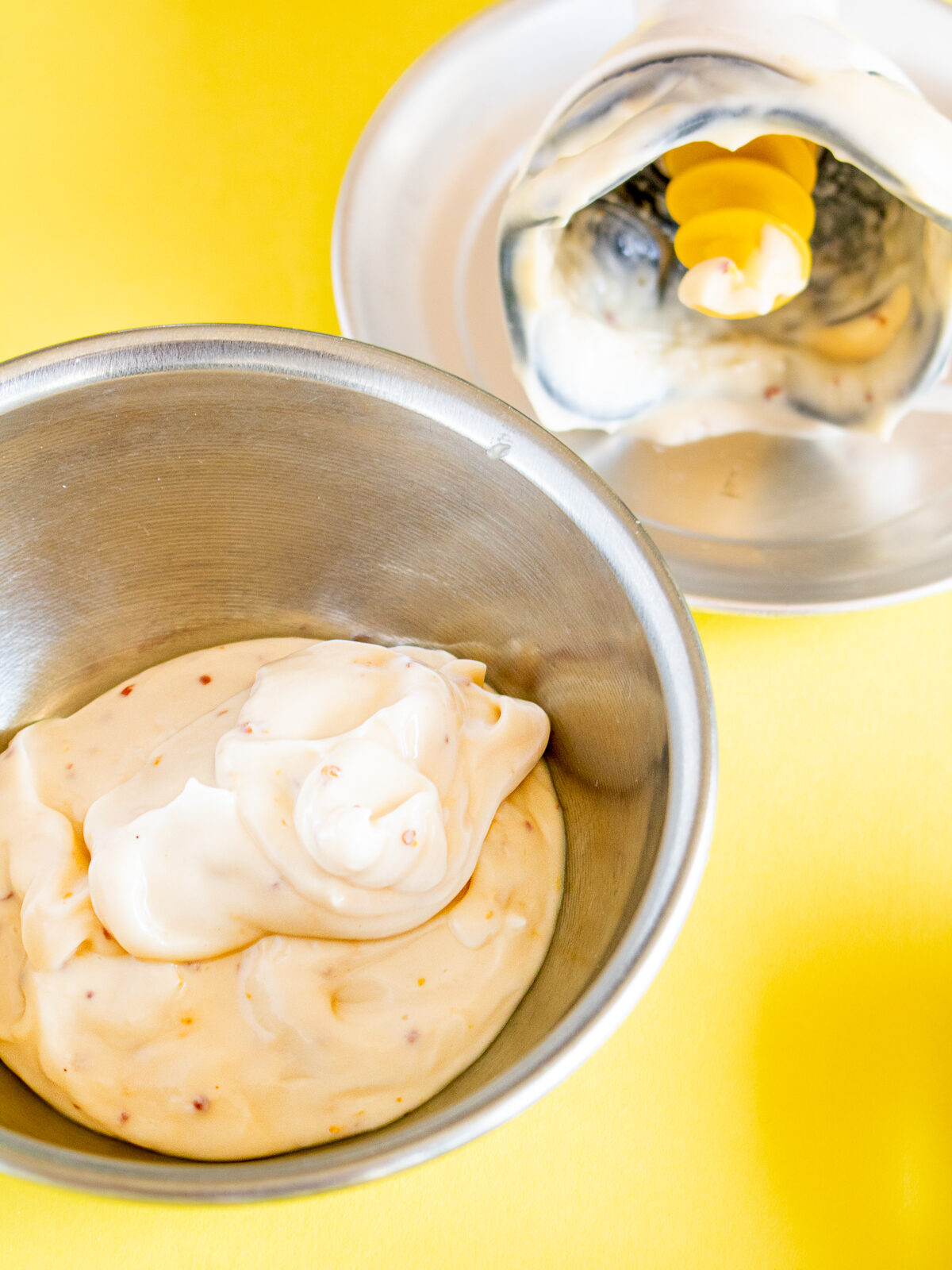
- Emulsify the oils
Add ¼ of the oil mixture and blend until thickened. Then add the remaining oil in three portions, blending well each time. - Store
Transfer the mayonnaise to a clean glass container and refrigerate. Use within one week for the best flavor.
📖 Variations
- Garlic flavor: Add grated garlic.
- Yuzu kosho flavor: Add a small pinch of Japanese citrus pepper.
- Spicy: Add a dash of chili pepper.
- Japanese sauce aurore: Mix vegan mayo with ketchup for a creamy, slightly sweet sauce.
🥄TOOLS
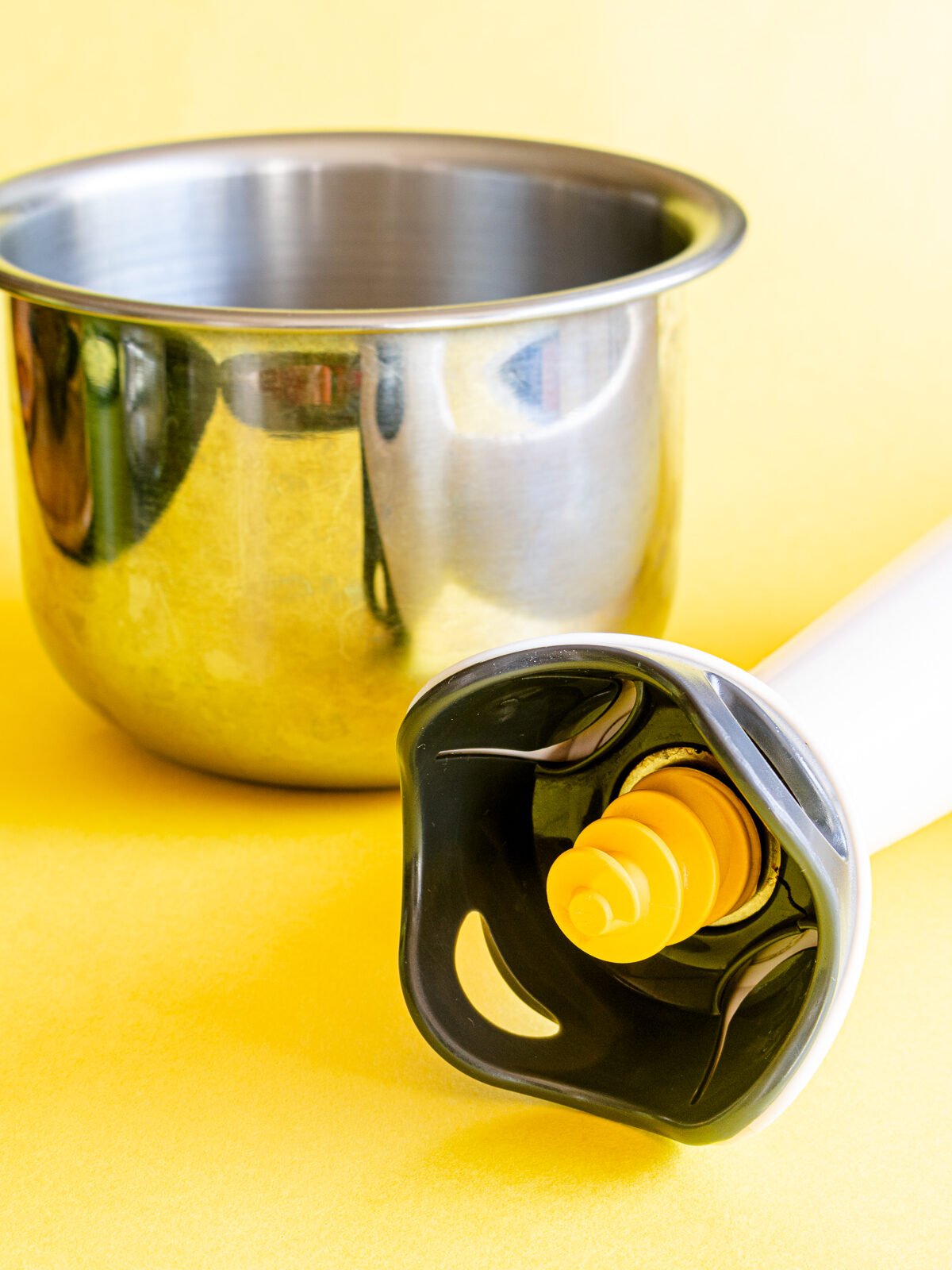
- Bowl: We recommend the Kobo Aizawa Salad Mix Bowl (13cm). It has just the right depth and size for using with a hand blender, creating smooth results in a short time. It’s also handy for making vegan chocolate mousse or chocolate ice cream bars.
- Hand Blender: Be sure to use the blade designed for mixing. If you use a sharp chopping blade, it may not blend properly, and the mayo could turn out more like a salad dressing.
- Storage Jars: 187 ml jam jars are ideal. They’re perfect for storing homemade vegan mayo and convenient for everyday use.
🫙 Storage
Keep refrigerated in a clean container. Best used within 7 days.
🧑🏾🍳 Tips for Success
- Start with proper emulsification: In the first step, blend the soy milk, vinegar, sugar, and salt thoroughly. When you add the first portion of oil (about ¼ of the total), make sure it fully emulsifies with the liquid. This is the most important stage—if the oil stays separate, the mayonnaise will never thicken properly.
- Add oil gradually: Once the first addition of oil is emulsified, add the rest in small portions (about three times). Blend well after each addition. This gradual process ensures a creamy, stable texture.
- Choose the right blade: Use a blender attachment designed for mixing (not chopping). A sharp chopping blade won’t create a proper emulsion and may leave you with a runny dressing instead of mayonnaise.
💭QUESTIONS
A: Yes, it’s inspired by Kewpie mayo, but milder in acidity. Using brown sugar and a touch of olive oil gives a slightly sweet, rich flavor while keeping it egg-free and plant-based.
A: Brown sugar (kokutou) adds a subtle caramel-like sweetness and depth that is closer to the taste of Japanese Kewpie mayonnaise. It also balances the tang from the vinegar.
A: A blend of rice bran oil and a small amount of extra virgin olive oil works best. Rice bran oil keeps the flavor neutral, while olive oil adds a subtle sharpness reminiscent of Kewpie mayo.
A: Make sure to blend the soy milk and vinegar thoroughly first. Then add the oil little by little, starting with about ¼ of the total amount. This first stage of emulsification is the key—once it thickens, you can gradually add the rest.
A: Yes, but the texture will be looser. For example, reducing to about 35 g of oil creates more of a dressing-like consistency rather than thick mayo.
A: Absolutely. For a milder flavor, use apple cider vinegar; for a sharper, traditional Japanese-style finish, use rice vinegar. This allows you to mimic the taste profile of Kewpie mayo.
A: You can mix in garlic, yuzu kosho, or a dash of chili for a spicy kick. For a Japanese twist, try blending it with soy sauce koji to make a delicious vegan Japanese mayo dip.
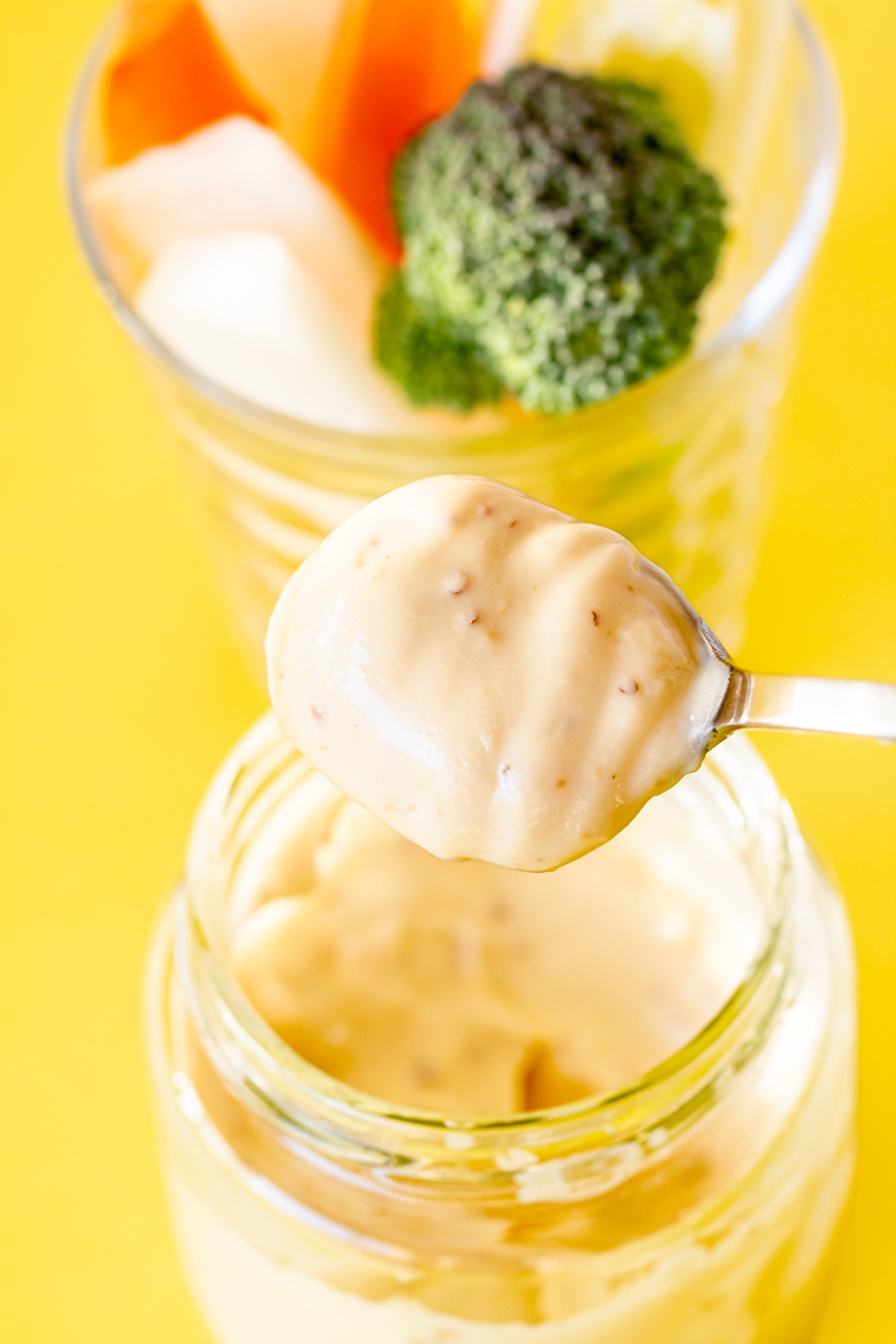

If you like this recipe or have already made it, we'd love to hear your thoughts in the COMMENTS 🐒. Also feel free to ask any questions or leave any requests!
🥚 Recipes Using Vegan Mayonnaise
👨🏻🍳 Homemade Vegan Seasoning Recipes
Versatile home made vegan Japanese umami seasonings:
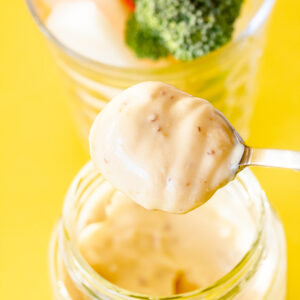
Vegan Japanese Mayonnaise
Equipment
- hand blender (with mixing blade)
- Mixing bowl
- clean glass jar or container
Ingredients
A Liquid & Seasoning
- 25 g plain soy milk (unsweetened)
- 3 g powdered brown sugar (kokutou, if available)
- 1 g natural salt
- 3 g mustard (grainy or Dijon)
- 1 teaspoon apple cider vinegar or rice vinegar
B Oils
- 45 g riche bran oil (neutral flavor)
- 5 g extra virgin olive oil
Instructions
- Combine liquids: Add all A ingredients (soy milk, sugar, salt, mustard, vinegar) to a mixing bowl. Blend well with a hand blender.25 g plain soy milk3 g powdered brown sugar1 g natural salt3 g mustard1 teaspoon apple cider vinegar or rice vinegar
- Start emulsifying: Add ¼ of the B oils and blend until the mixture thickens and emulsifies.45 g riche bran oil5 g extra virgin olive oil
- Finish blending: Add the remaining oils in three parts, blending well after each addition until smooth and creamy.
- Store: Transfer to a clean glass container or jar. Refrigerate and use within 1 week.
Notes
- Tip: To prevent separation, emulsify the first quarter of the oil thoroughly with the soy milk and vinegar before adding the rest gradually.
- Storage: Keep in a clean glass jar, refrigerated, and use within 1 week.
- Serving Ideas: Perfect as a dip for veggie sticks or fries, spread on sandwiches, or as a base for vegan salad dressings.
- Variation: Try mixing with soy sauce koji for a rich vegan Japanese mayo dip, great for sushi rolls or rice bowls.

We'd absolutely love to see your photos of the dishes you've made with our recipes! Share them on Instagram with the hashtag #vegin_vegan_vegun or just tag us @veginveganvegun 🙏

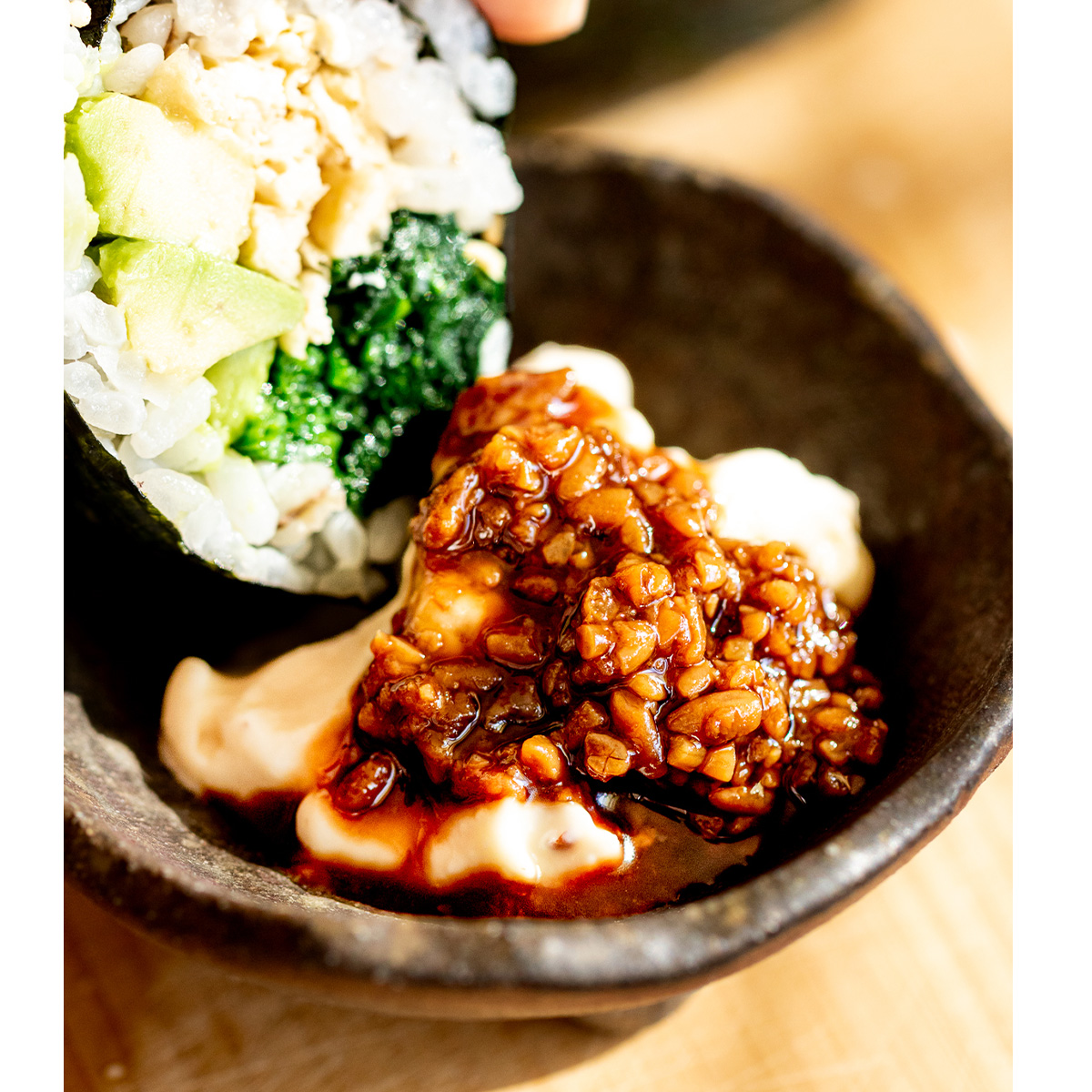
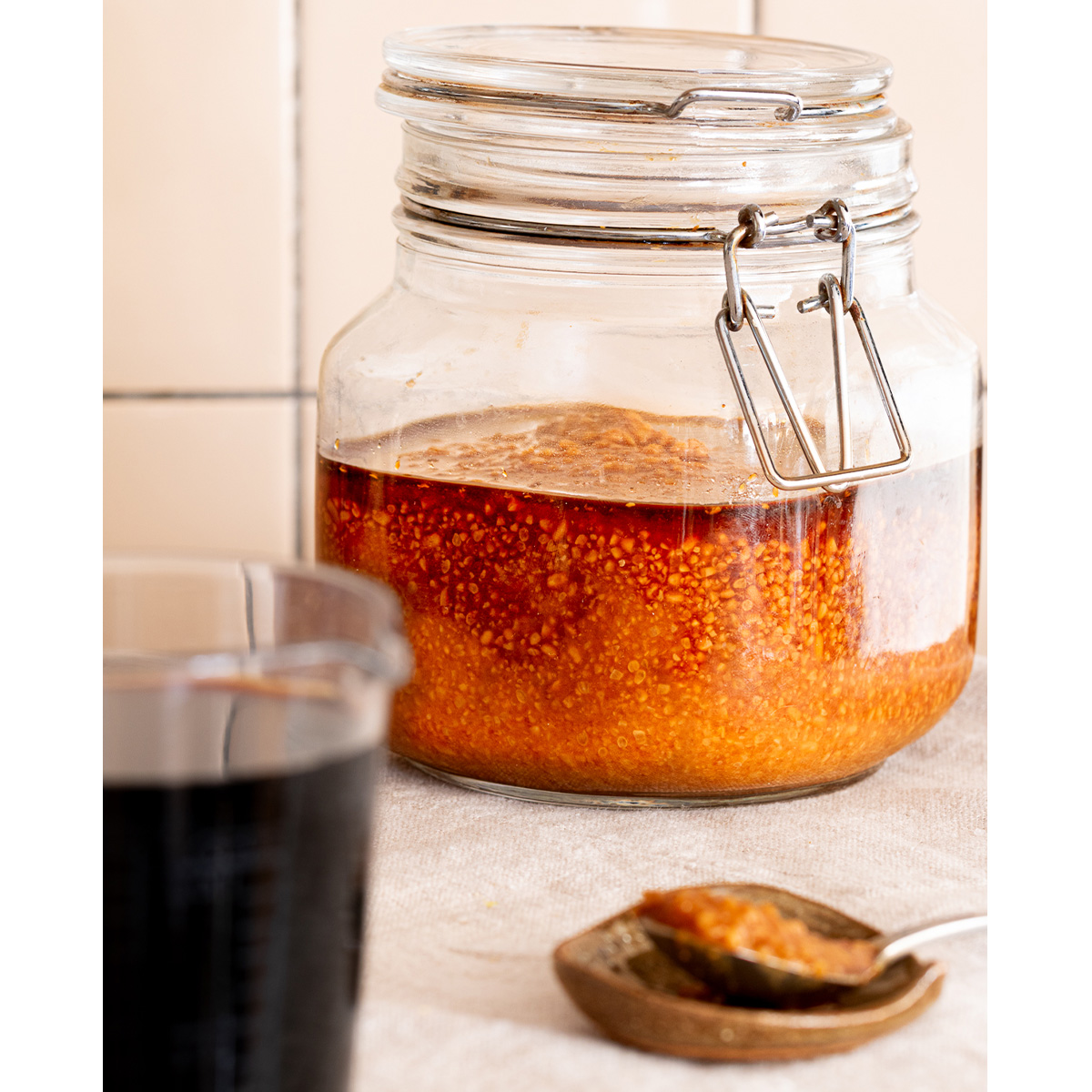
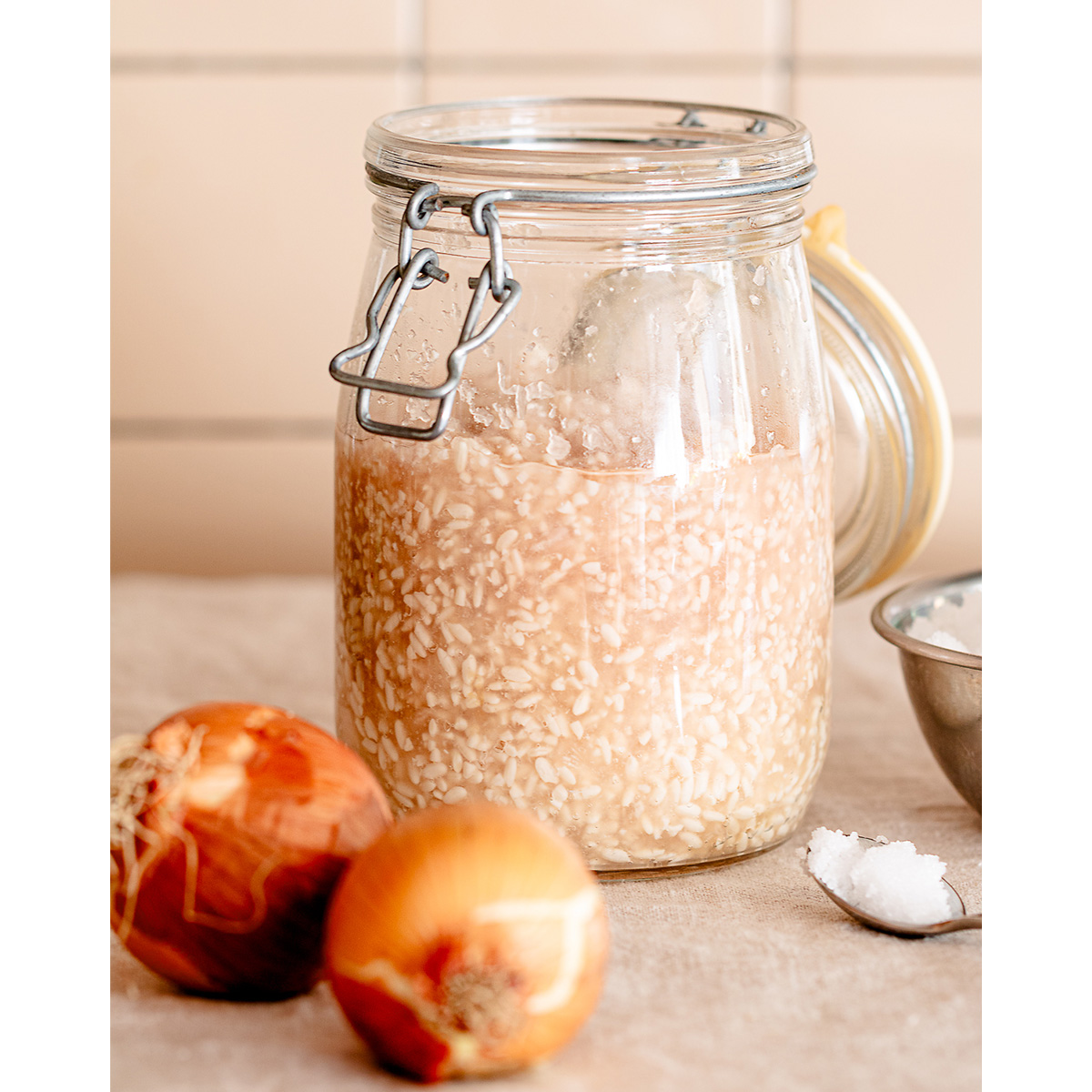
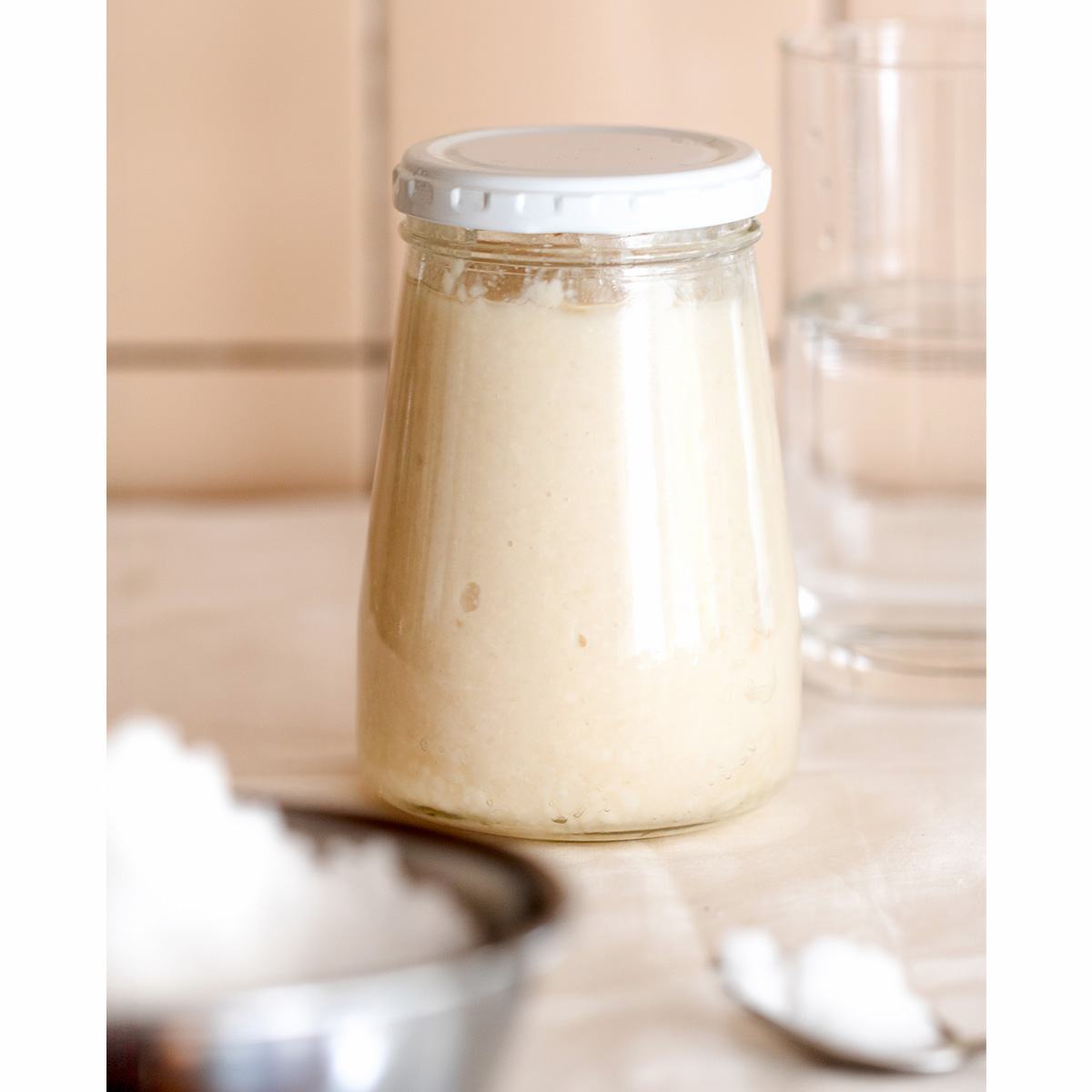

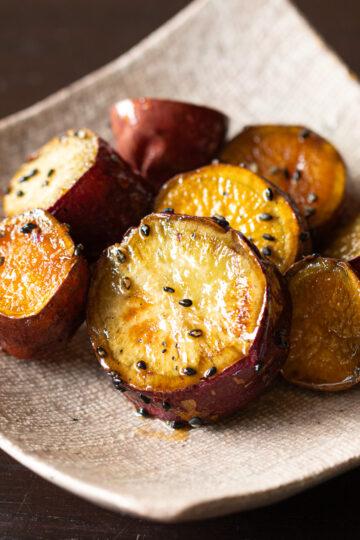
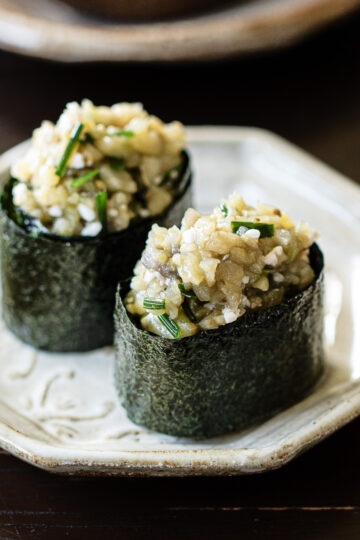
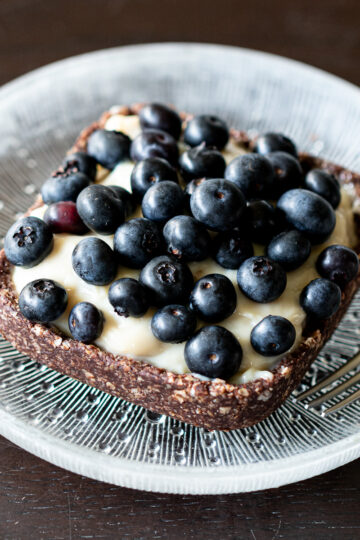
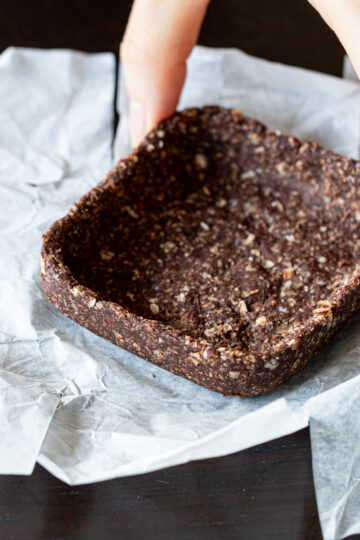
YURI says
It was perfect for vegan sandwitches.